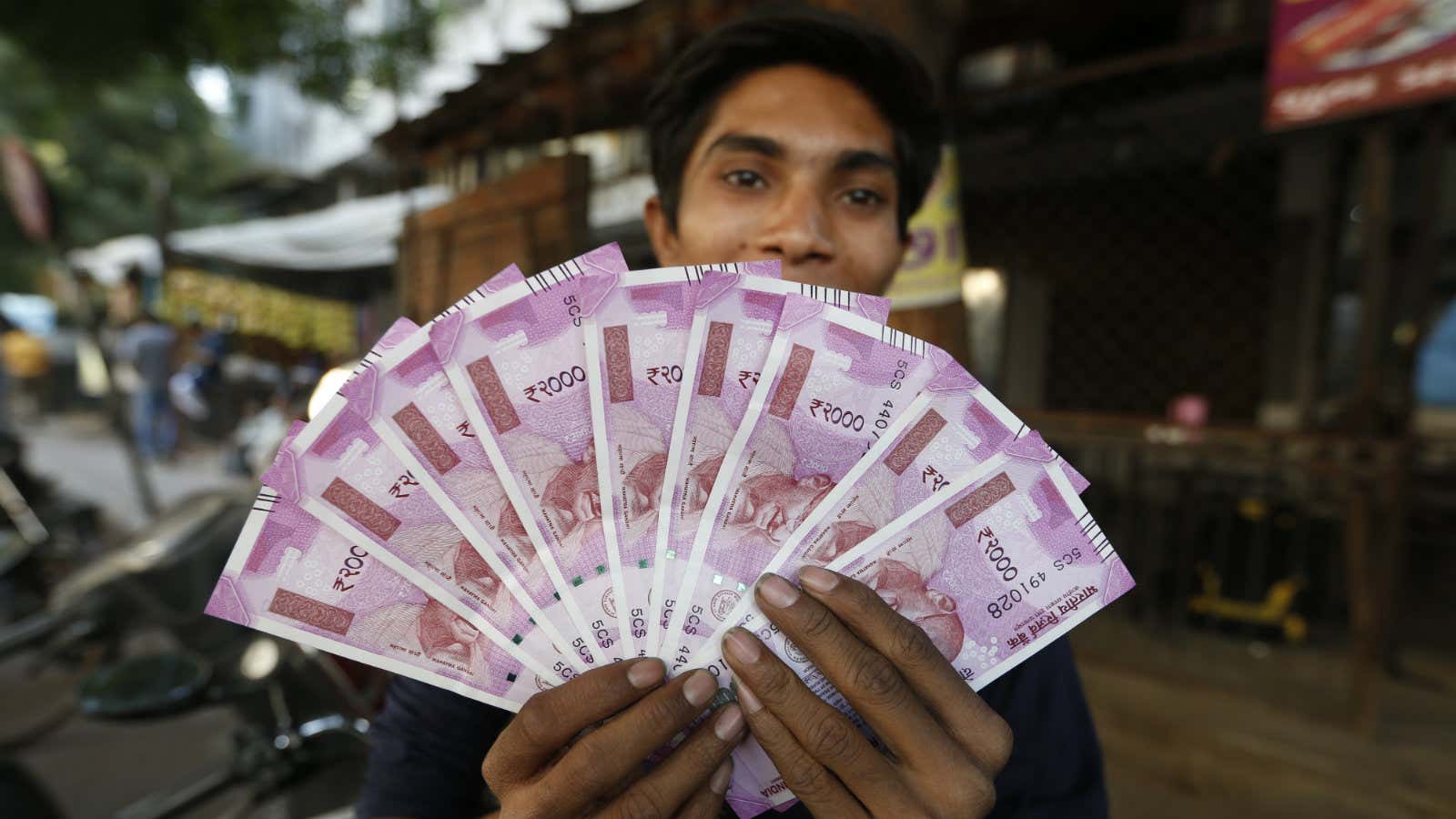The Indian rupee has been on a roll this year as one of Asia’s-best-performing currencies.
On Aug. 02 (Wednesday), the rupee surged to a two-year high, closing at Rs63.70 against the dollar—its strongest level since July 22, 2015. In fact, right from the start of this calendar year, it has been on a strong footing. So far, it has gained over 6% compared to Rs67.94/$ on Jan. 02, the first trading day of 2017.
So, what’s fuelling this rally?
“The fundamentals for India have improved and, on the other hand, the dollar has weakened. All this has made India one of the-best-performing currencies in the world,” explained Ananth Narayan, head, financial markets, Standard Chartered Bank.
India is expected to be the second-fastest growing economy in the world till 2025, expanding at an average rate of 7.72% every year. Buying into the growth story, foreign portfolio investors have been pumping in money as a vote of confidence, making net purchases of $15.2 billion in the domestic debt and equity markets till July. This has helped in pushing up the domestic currency’s value.
The country is also likely to remain a key destination for foreign direct investments. Along with Indonesia, Malaysia, Thailand, Philippines, and Vietnam, it is expected to be the investors’ top pick among emerging economies till 2025, according to a Nomura report released on Wednesday.
Foreign investors are bullish because domestic macroeconomic indicators such as inflation and the current account deficit (CAD) have been benign. Retail inflation fell to a record low of 2.18% in May as a result of a sharp drop in food prices. The CAD has also been under control at 0.6% of the GDP in the Jan-March quarter. This, in turn, has strengthened the rupee.
The lower inflation also prompted the Reserve Bank of India to cut key interest rates on Wednesday. It reduced the repo rate—the rate at which it lends to commercial banks—by 0.25%. This move would have also given some support to the rupee.
Moreover, the party is expected to last for a while.
Flying high
Often, central banks step in to support their country’s currency and reduce volatility in the market. Because a rising currency does not bode well for certain industries, particularly those focused on exports, such as textiles, automobiles, IT, and pharma. This in turn affects the CAD.
On Wednesday, significantly, the RBI did not intervene as the rupee kept gaining ground.
“This indicates that they (RBI) are comfortable with the currency appreciation,” explained Sajal Gupta, head of forex and rates at Edelweiss Securities. “Moreover, there is also the concern that the US can brand it as a currency manipulator if the central bank continues to step in. The lack of intervention is a good move that can help the rupee rise further.”
So, even if there is some short-term selling pressure on the rupee, it is widely expected to maintain this trajectory through this calendar year at least. “Until and unless there is a surprising turn of events in India or globally and some unfavourable economic circumstances come up, the rupee is expected to appreciate. It can go up to the Rs62/$ mark by the year-end,” said an analyst with a private sector bank.
However, skeptics believe the tide could turn soon. A report by Kotak, released in April, predicted that over the next few months the currency may lose steam and average at Rs66.2 against the dollar. Another report by CARE ratings also expected it to tumble sooner than later.
So far, though, there seems no stopping the rupee.
